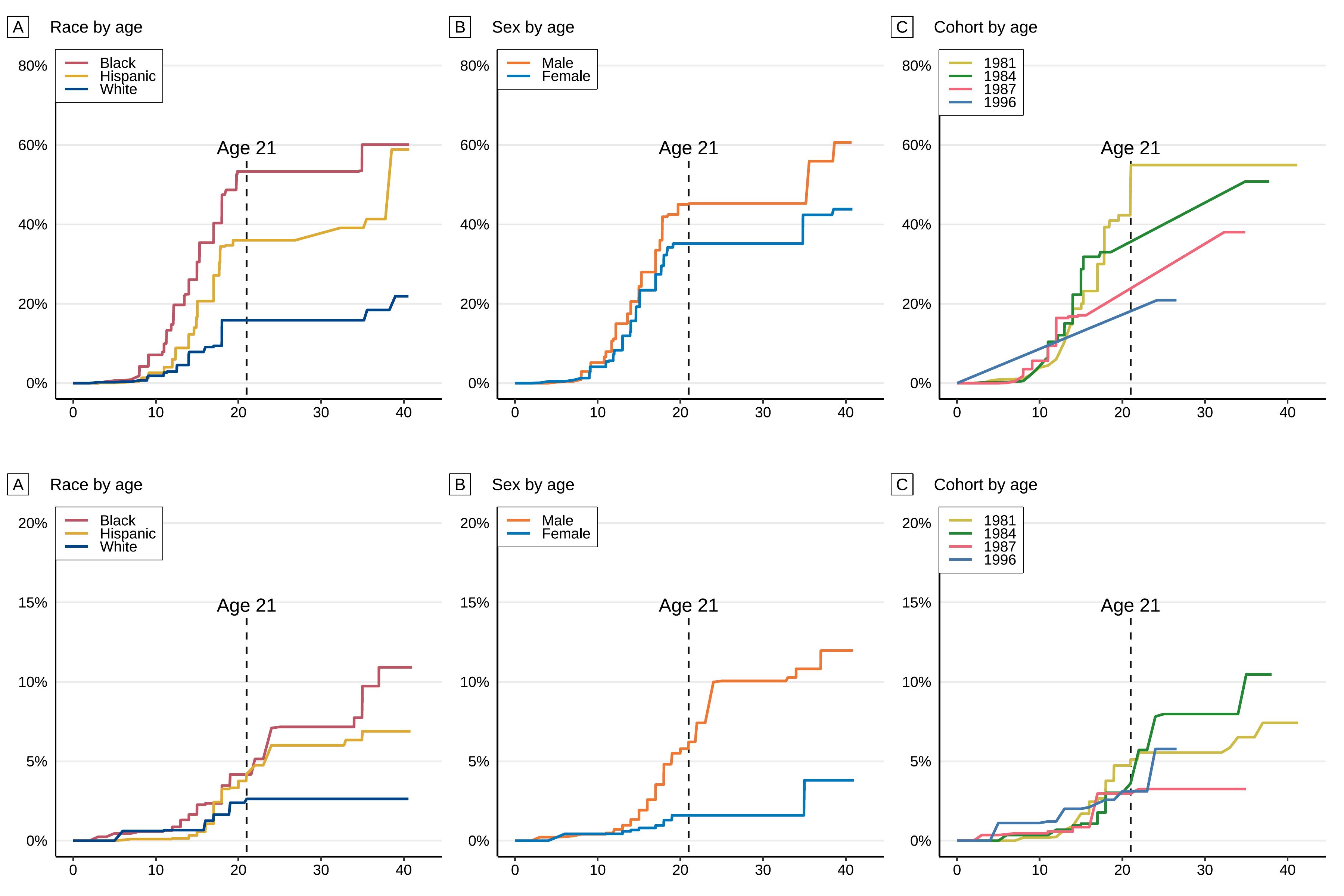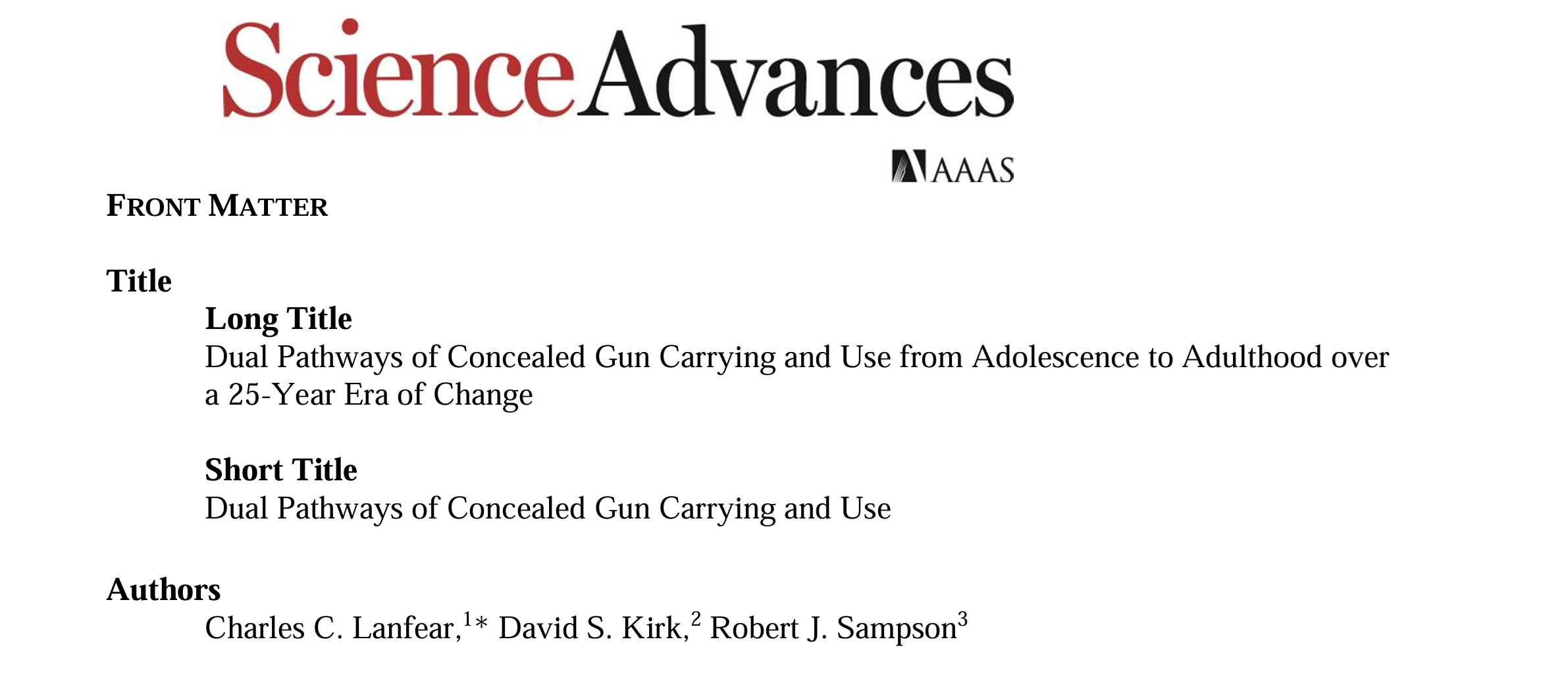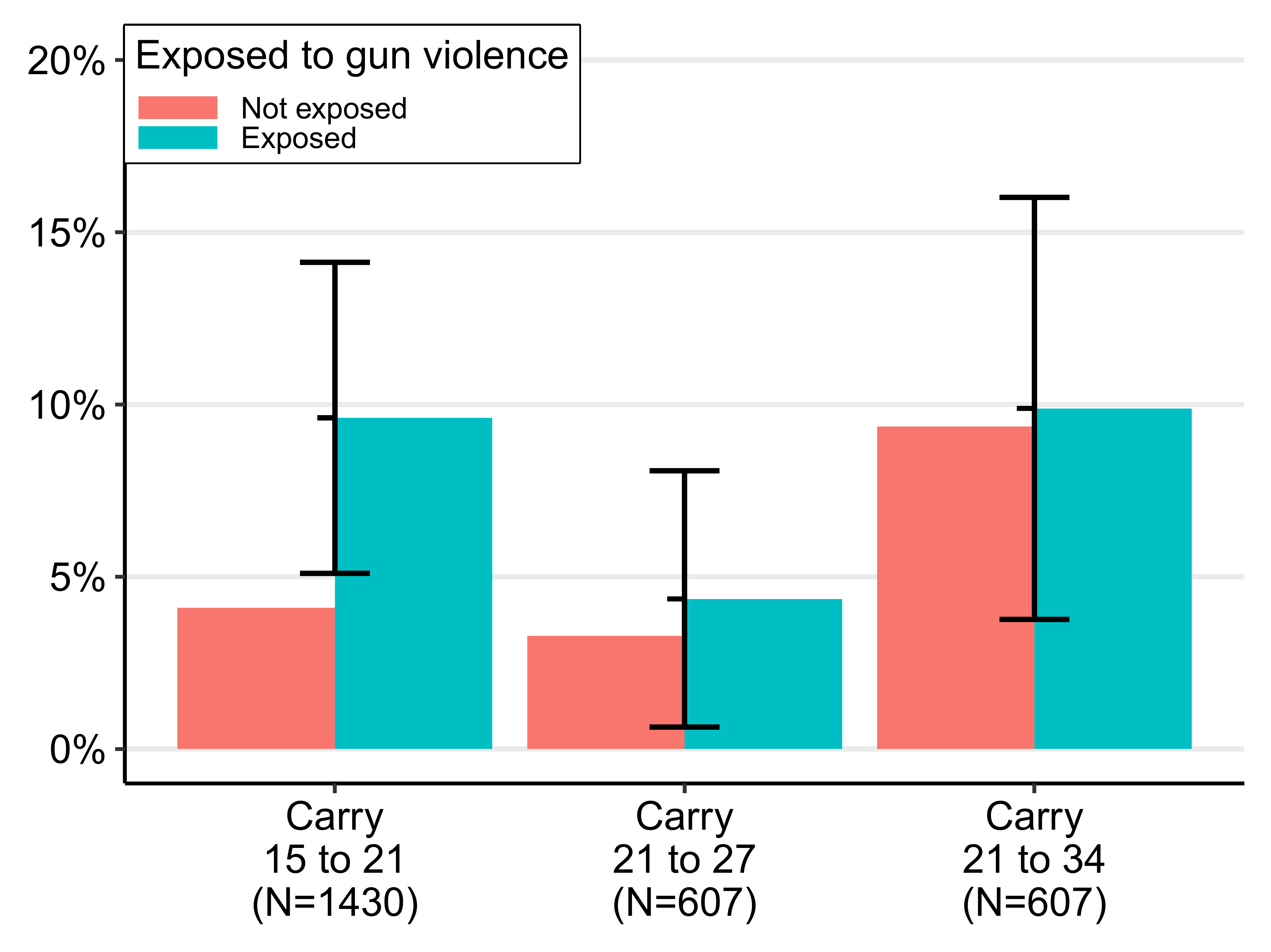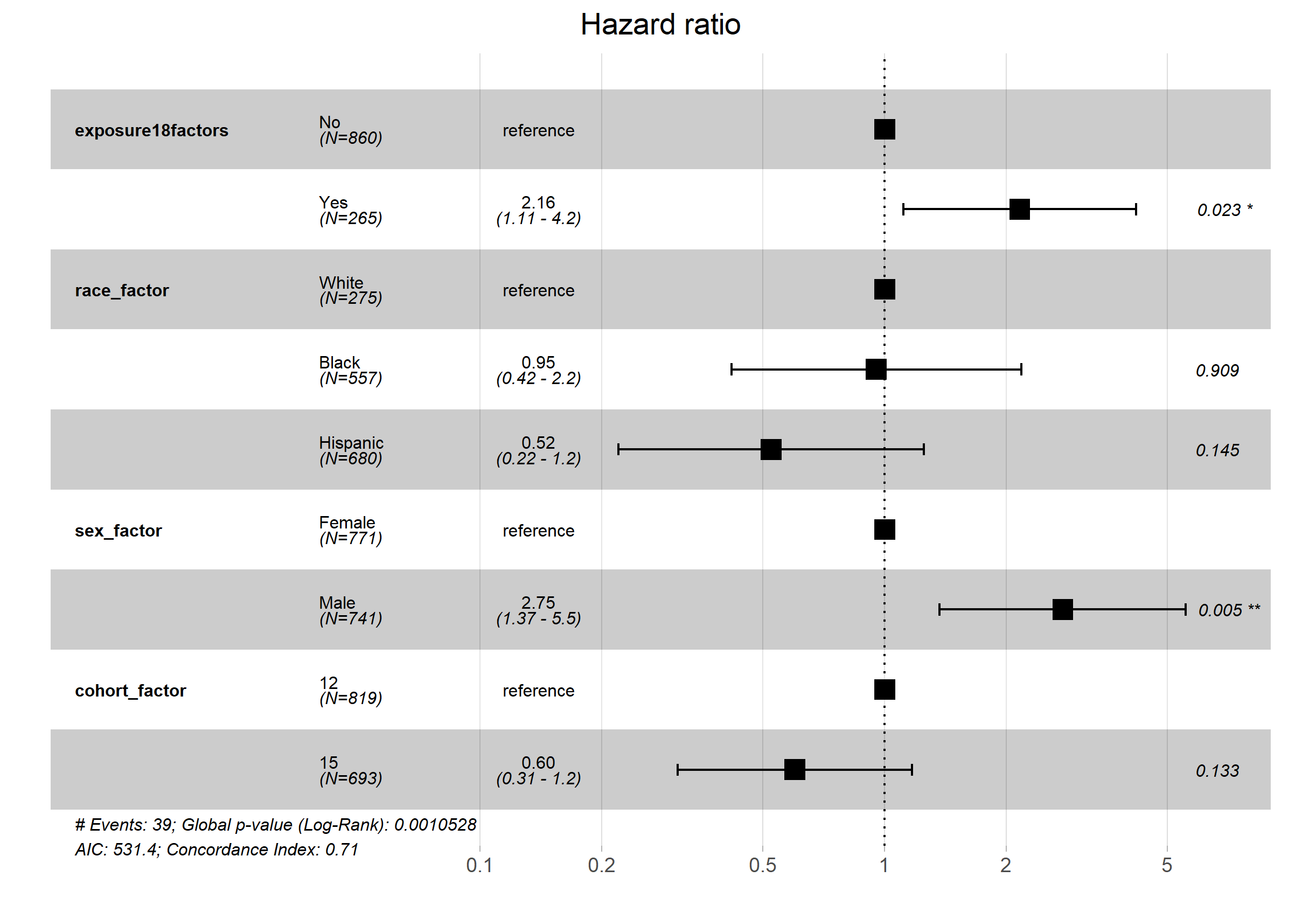Mid-life health consequences of exposure to gun violence
| Charles C. Lanfear | University of Cambridge |
| Robert J. Sampson | Harvard University |

Exposure to gun violence is pervasive but varies by…
- Birth cohort
- Race
- Sex
- Life stage

- Exposure high for 90s adolescents, 2016-2021 adults
- Black and Hispanic males at highest risk
 Gun carrying follows two age-specific patterns:
Gun carrying follows two age-specific patterns:
- Adolescent carrying age-limited, responsive to exposure
- Adult carrying persistent, responsive to macro-context

- Exposure predicts adolescent but not adult gun carrying
- Young carriers likely in uniquely dangerous contexts
The present study
Race, sex, and cohort differentiated exposure to gun violence may produce lasting harm to physical and mental heath
But those most vulnerable may move away from dangerous places…
… or even die as a result of that danger
- Different forms of exposure
- Mobility: A confounding mediator
- Mortality: A censoring collider
Questions
How does exposure to gun violence affect mid-life…
- Physical health
- Mental health
- Substance use
And to understand this, we need to know how it affects…
- Mortality
- Residential mobility
- Health:
- Mental:
- Kessler K6 distress scale (0-24)
- 13+ indicative of serious mental illness
- Anxiety, depression, PTSD
- Kessler K6 distress scale (0-24)
- Physical:
- Self-reported physical health (1-5)
- Diagnosed serious health conditions
- Substance use
- Mental:
- Exposure to gun violence:
- Age first saw someone shot
- Adolescent gun carrying
- Past-year shootings within 250m
- Tract homicide rate
Analysis
- Today’s exploratory analysis:
- Linear and ordinal models
- Covariate control
- Family background
- Childhood neighborhood
- Future plans:
- Improved measurement
- More complete model
- Mortality
- Mobility
- Plausibly identified effects
- e.g., structural nested models
Results
Mental health in mid-life

Mental health during adolescence

Note: 1996 cohort only
Physical health in mid-life

Physical health in adolescence

Note: 1996 cohort only
Mortality sneak-peek

Takeaways
Key results
- Modest but significant associations over time
- Primarily mental health
- Strong contemporaneous associations
- Young gun carriers reported poor mental, excellent physical health
- Not accounting for mortality or mobility
- These may suppress (or amplify) associations
Next steps
- Expanding the model
- Mortality
- Mobility
- Serious physical health conditions
- Can we get leverage on causal identification?
- Power / variation
- Sequential ignorability
Feedback and Questions
Contact:
Charles C. Lanfear
Institute of Criminology
University of Cambridge
cl948@cam.ac.uk
For more about the PHDCN+:
PHDCN@fas.harvard.edu
https://sites.harvard.edu/phdcn/
https://doi.org/10.1007/s40865-022-00203-0
Appendix
Kessler K6
“During the past 30 days, about how often did you feel…”
- … nervous?
- … hopeless?
- … restless or fidgety?
- … so depressed that nothing could cheer you up?
- … that everything was an effort?
- … worthless?
Levels:
- All of the time
- Most of the time
- Some of the time
- A little of the time
- None of the time